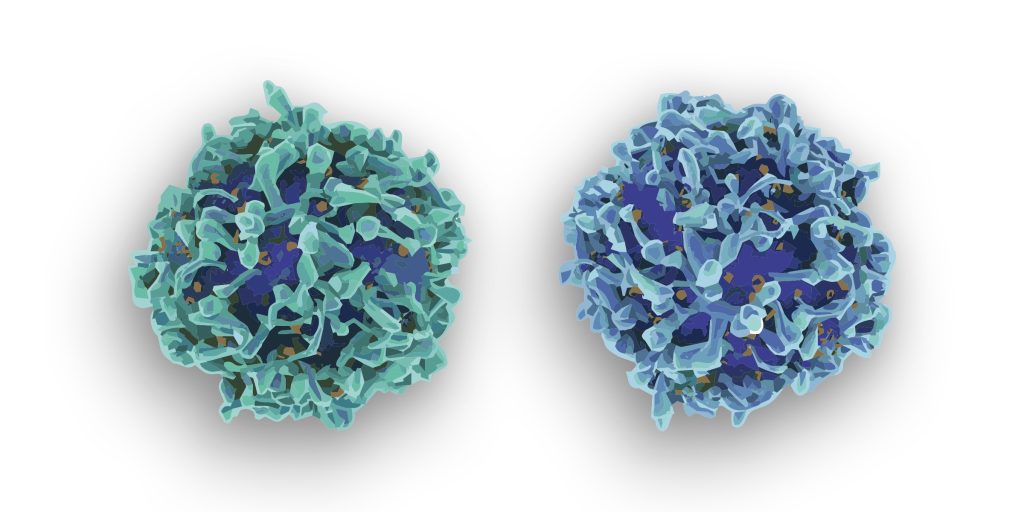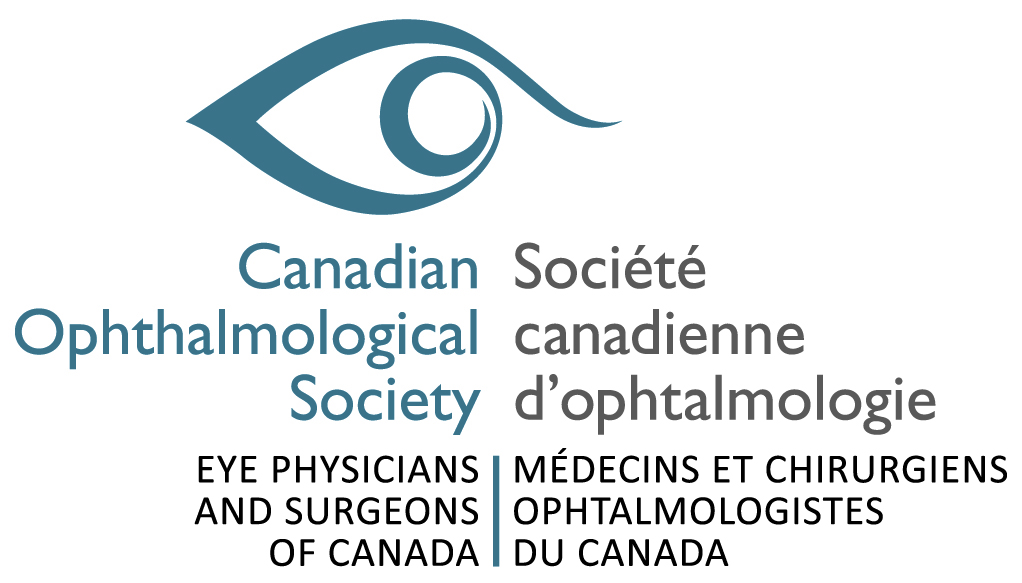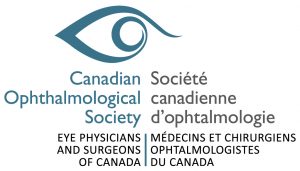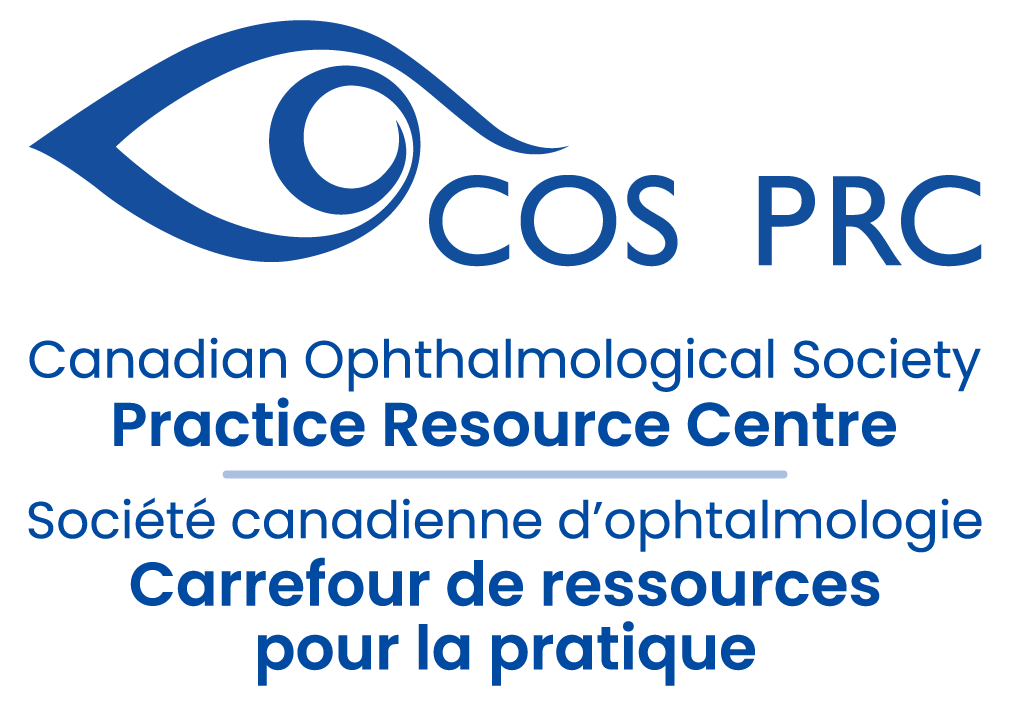Understanding Ophthalmologists’ Perspectives on Biosimilars

Background
A needs assessment was conducted to better understand the needs of Canadian ophthalmologists in the context of biosimilars. Biosimilars are biotherapeutic agents that aim to replicate the efficacy and safety profile of their reference biologic counterparts. They undergo rigorous testing to ensure comparable safety, efficacy, and quality. Biosimilars hold the potential to enhance patient access to essential medications and foster competition within the healthcare market.
The purpose of the needs assessment was to determine the necessity of educational programs and other assets to support ophthalmologists in effectively navigating biosimilars.
Ophthalmologists’ Knowledge and Practices
Ophthalmologists are becoming more aware of biosimilars but there is still some hesitancy in adopting their widespread usage. In order to better understand their perspectives, COS conducted 2 surveys – one in English and one in French.
Online surveys were distributed to ophthalmologists across Canada. There was an overall completion rate of 76% (95 complete, 30 partial responses out of 125 total). The English survey had representation from multiple provinces, with the highest being Ontario. The French survey respondents were 100% from Quebec. Despite some provincial skewing, participation was geographically diverse offering a comprehensive view.
The findings revealed that while awareness of biosimilars for anti-VEGF treatments stood at 61.1%, actual usage was notably lower, with only 26.1% of respondents having utilized biosimilars. Preparedness to incorporate biosimilars into practice varied among ophthalmologists, with larger studies, longer-term analyses, and real-world evidence identified as factors that could increase comfort levels with biosimilar adoption.
Interest in educational initiatives was pronounced, with respondents expressing a desire for webinars, online seminars, clinical practice guidelines, and increased educational meetings or journal clubs. However, concerns persisted regarding limited understanding of safety and efficacy, restricted access to information, and uncertainty surrounding regulatory standards and approval processes.
Perceptions and Concerns about Biosimilars
Ophthalmologists voiced nuanced opinions regarding the approval process and the likelihood of biosimilar adoption. Notably, 80% of respondents advocated for implementation of larger clinical trials to ensure the safety and efficacy of biosimilar drugs. However, views on the likelihood of adopting biosimilars in the near future were mixed.
Open-ended responses underscored the diversity of opinions among ophthalmologists, with concerns ranging from safety and efficacy to the potential for cost savings and the necessity for additional evidence-based data. The influence of medication cost and the presence of patient support programs moderately affected decision-making processes. Uncertainty surrounding regulatory standards and approval processes emerged as a common concern.
Conclusions and Next Steps
The needs assessment’s key findings emphasize the imperative for further education, larger clinical trials, and real-world evidence to assuage concerns and enhance ophthalmologists’ comfort levels with biosimilars. These perspectives have tangible implications for decision making processes and the potential adoption of biosimilar drugs in ophthalmology.
Recommendations include the development of comprehensive educational initiatives, collaboration for larger studies, and the generation of real-world evidence to address ophthalmologists’ concerns effectively. Additionally, the establishment of an educational toolkit tailored to biosimilar usage in ophthalmic practice is recommended for guiding informed decision-making and ensuring patient safety.
This needs assessment was completed with an unrestricted educational grant with COS and Apotex, Biocon & Biogen and was planned to achieve scientific integrity, objectivity and balance.
Summary of Data
Awareness and Usage of Biosimilars
- 61.1% of ophthalmologists surveyed are aware of biosimilars for retinal conditions
- However, only 26.1% are currently using them in their practice
Likelihood of Using Biosimilars
- 51% said they are likely to start using biosimilars in their practice in the near future
- 49% said they are not likely to start using them
Factors to Increase Comfort Level with Biosimilars
- More educational meetings/journal clubs (56%)
- Real-world studies (46.2%)
- Longer-term studies (38.5%)
- Larger studies (29.7%)
Educational Interests
Ophthalmologists expressed interest in various educational modalities to increase their knowledge of biosimilars
- Webinars/online seminars (57.1%)
- Clinical practice guidelines (50.5%)
- Peer-reviewed journal and articles (39.6%)
- Case-based discussions/grand rounds (37.4%)
- Mentorship programs (26.4%)
To view the sources for this needs assessment, you can download them here:
We would like to take the opportunity to thank the scientific planning committee for conducting this needs assessment. To view their profiles, you can download the document here:
Corneal Neuropathic Pain General Information for Patients and Providers

March, 2023
Definition
Corneal neuropathic pain, or corneal neuralgia, may be defined as chronic eye pain lasting more than three months that is not responsive to standard measures, and severe enough to affect daily living. The phenomenon is sometimes described after ocular surgery, including corneal and intraocular, but can occur after any type of eye trauma.
The condition is not well understood and there is no agreement on the diagnostic criteria, causes, incidence, nor treatment.
Pathophysiology
The V1 ophthalmic division of the trigeminal nerve contains nociceptors that respond to a variety to stimuli, including mechanical force and temperature. When stimulated, a signal transduction is transmitted and processed in the pain regions of the cerebral cortex. It is hypothesized that repeated damage to the cornea and its corresponding neuronal pathway results in a hyper‐inflammatory state, which leads to maladaptive sensitization either peripherally at the cornea or centrally at postsynaptic junctions.
Therefore, it may be useful to assess and manage corneal neuropathic pain as either peripheral or central pain sensitization.
Symptoms
Symptoms include, but are not limited to:
- Chronic, unrelenting eye pain
- Dry eye syndrome without signs, which is non‐responsive to standard treatment
- Light sensitivity, burning, foreign body sensation
- Symptom severity has resulted in suicide
Signs
- “Pain without stain”,
- Punctate keratopathy
- No signs may be present
Associated Conditions
- Central somatic sensitivity syndrome
- Fibromyalgia
- Autoimmune disease
- Chronic migraine and headache
- Persistent Post‐operative Pain Disorders (PPP)
Investigations
- Patients’ response to topical anesthetic may be useful in determining if the corneal neuropathic pain is a central or peripheral cause. A response of decreased pain with local anesthetic is suggestive of peripheral etiology.
In vivo Confocal microscopy
The sub‐basal nerve density has been reported to be significantly reduced in corneal neuropathic pain compared with control subjects. Other features described are activated keratocytes and spindle, lateral and stump microneuromas. However, the significance of these findings is unclear, as similar changes can be observed following uncomplicated PRK and LASIK. Therefore, the current role of confocal microscopy in these patients is unclear, and it is available on a limited basis in Canada mostly at academic centers.
Treatment Goals
- Regenerate corneal nerves and reduce inflammation
- Patients with predominantly peripheral sensitization likely have a better outcome than those with central sensitization
- Maximize ocular surface management as with severe dry eye
- Frequent preservative‐free artificial tears, limited use of topical steroids, night‐ time gels, topical cyclosporine
- Most patients will have had this treatment prior to referral with failure to respond
Additional Treatment Options
- Autologous serum drops
- Amniotic membrane
- Neurostimulation
- Corneal growth factors
- Neuromodulation
- Scleral contact lenses
- Systemic treatment may be necessary such as gabapentin, pregabalin, amitriptyline, and low‐dose naltrexone
- Referral to neuro‐ophthalmologist/neurologist/pain specialist. Resources are available in Canada for additional consultation and management
Outcomes
There is a high degree of variability in patient outcomes, with some patients suffering long‐term disability from the symptoms while others show complete resolution after 1 to 2 years. Information in this regard is anecdotal but it is advisable to take all possible measures to manage the disease, as long standing corneal neuralgia tends to be associated with worse patients outcomes.
References
Aggarwal S, Kheirkhah A, Cavalcanti BM, et al. Autologous Serum Tears for Treatment of Photoallodynia in Patients with Corneal Neuropathy: Efficacy and Evaluation with In Vivo Confocal Microscopy. The Ocular Surface. 2015;13(3):250‐262. doi:10.1016/j.jtos.2015.01.005
Crane AM, Levitt RC, Felix ER, Sarantopoulos KD, McClellan AL, Galor A. Patients with more severe symptoms of neuropathic ocular pain report more frequent and severe chronic overlapping pain conditions and psychiatric disease. British Journal of Ophthalmology. 2017;101(2):227‐231. doi:10.1136/bjophthalmol‐2015‐308214
Galor A, Covington D, Levitt AE, et al. Neuropathic Ocular Pain due to Dry Eye Is Associated With Multiple Comorbid Chronic Pain Syndromes. The Journal of Pain. 2016;17(3):310‐318. doi:10.1016/j.jpain.2015.10.019
Kundu G, Shetty R, D’Souza S, et al. A novel combination of corneal confocal microscopy, clinical features and artificial intelligence for evaluation of ocular surface pain. PLoS One. 2022;17(11):e0277086. doi:10.1371/journal.pone.0277086
Levitt, A.E., Galor, A., Weiss, J.S. et al. Chronic dry eye symptoms after LASIK: parallels and lessons to be learned from other persistent post‐operative pain disorders. Mol Pain 11, 21 (2015). https://doi.org/10.1186/s12990‐015‐0020‐7
Moshirfar M, Benstead EE, Sorrentino PM, Tripathy K. Ocular Neuropathic Pain. In: StatPearls. StatPearls Publishing; 2022. Accessed January 21, 2023. http://www.ncbi.nlm.nih.gov/books/NBK542282/
Neuropathic Corneal Pain ‐ ClinicalKey. 2023.https://www.clinicalkey.com/#!/content/playContent/1‐s2.0‐S0161642017306127
Ocular Neuropathic Pain ‐ EyeWiki. https://eyewiki.aao.org/Ocular_Neuropathic_Pain
Pakravan M, Roshani M, Yazdani S, Faramazi A, Yaseri M. Pregabalin and Gabapentin for Post‐Photorefractive Keratectomy Pain: A Randomized Controlled Trial. European Journal of Ophthalmology. 2012;22(7_suppl):106‐113. doi:10.5301/ejo.5000143
Rosenthal P, Borsook D. Ocular neuropathic pain. Br J Ophthalmol. 2016;100(1):128‐134. doi:10.1136/bjophthalmol‐2014‐306280
Canadian Ophthalmological Society (COS) Joint Position Statement on Biosimilar Drugs
October 2022
Canadian Ophthalmological Society (COS) Joint Position Statement on Biosimilar Drugs



Biosimilar biologic drugs (biosimilars*) were introduced in the Canadian market in 2009. The first ophthalmic biosimilar for intravitreal injection is expected to be launched in Canada in the late fall of 2022. With this launch, it is expected that use of biosimilars across Canada will rapidly increase.
Read the full position statement here
Non-hospital Surgical Centres Advocacy Principles
The Non-Hospital Surgical Centres (NHSC) Principles is a distilled set of advocacy principles developed by the Canadian Ophthalmological Society. This document is based on feedback from a COS Workshop on NHSC held in September 2021, and from member and stakeholder surveys undertaken during the spring of 2022.
To view the full document please click here:

Position Statement by the Canadian Ophthalmological Society (COS) Regarding Vision therapy (VT), or Behavioural Optometry
August 2022

Vision therapy (VT), or behavioural optometry, is a generalized term for behavioural treatments based upon the belief that abnormalities in vision are the underlying cause of learning, neurological and spatial disabilities.
A review of the available literature on these treatments conducted in 2022 by a committee of physicians specializing in pediatric ophthalmology and neuro-ophthalmology found that, with the exception of convergence insufficiency, evidence that these therapies are effective is lacking.
Background
Vision therapy is a term used to refer to a spectrum of in-office supervised exercises that aim to improve visual ability and skill. Vision therapy programs are prescribed for a wide and etiologically diverse group of pathological and non-pathological learning, oculomotor, visual and post-traumatic states. These conditions include strabismus, amblyopia, learning/reading disabilities (dyslexia), myopia, and brain injuries such as stroke, concussion, and trauma with visuospatial neglect. Vision therapy remains an uninsured paramedical service.
Canadian Ophthalmological Society (COS) members have noted a sharp increase in the number of requests to provide an opinion on the effectiveness and validity of prescribed vision therapy programs. These programs can last from several weeks to years and, at times, a lifetime of treatment. The COS Vision Therapy committee feels that additional high-quality evidence-based research must be performed prior to any consideration for public or private insurance coverage.
Read the full position statement here.
Canadian Ophthalmological Society (COS) Joint position paper calling for a complete ban on scleral tattooing and eyeball jewellery implantation in Manitoba
September 2018




Context: There is a growing trend among body modification enthusiasts to tattoo their eyeballs (specifically the sclera of the eye) and also implant jewellery under the surface layer (conjunctiva) of the eyeball. This is being done unsafely by untrained artists under questionable conditions and leading to a
variety of unfortunate complications, including loss of vision and loss of the eye in some cases. As eye health care professionals, the Manitoba Association of Optometrists (MAO) and the Eye Physicians and Surgeons of Manitoba (EPSOM) are submitting this joint statement calling for a ban of these dangerous practices leading to unnecessary morbidity and loss of vision in members of the unsuspecting public.
Read the Full Position Statement Here
Evidence-based clinical practice guidelines for the periodic eye examination in children aged 0-5 years in Canada
December 2019
Evidence-based clinical practice guidelines for the periodic eye examination in children aged 0-5 years in Canada


The Position Stated is based on current evidence and expert medical opinion available at the
time and was endorsed by the COS in November 2019.
Background: As eye disease before age 5 years is common, some form of vision screening should be performed on children before attending primary school. However, the lack of consistent national recommendations creates confusion for patients, eye care professionals, and governments alike.
Download the full guidelines here
Canadian Glaucoma Society Evidence-Based Recommendations for the Risk of Acute Angle Closure Glaucoma with Routine Use of Hyoscine-n-Butylbromide (Buscopan) for Gastroenterological Procedures
November 2019
Evidence-Based Recommendations for the Risk of Acute Angle Closure Glaucoma with Routine Use of Hyoscine-n-Butylbromide (Buscopan) for Gastroenterological Procedures.


The Position Stated is based on current evidence and expert medical opinion available at the time and was endorsed by the COS in November 2019.
Background: Hyoscine-n-butylbromide (Buscopan) is a commonly used anticholinergic medication for
gastroenterological endoscopic procedures because of its ability to induce smooth muscle relaxation and decrease spasm. It can also be used for radiologic procedures of the gastrointestinal tract. Buscopan may increase detection of colorectal adenoma by up to 30%, thus this medication should not be withheld needlessly.
Read the full position statement here.
Advisory Statement: Regarding Light Therapy (Photobiomodulation) for Macular Degeneration
July 21, 2022
Advisory Statement: Regarding Light Therapy (Photobiomodulation) for Macular Degeneration

Discussion: Patients with early dry macular degeneration often have relatively normal vision. As the disease progresses to advanced stages, patients can have both a gradual and/or sudden loss of central vision. There are no proven pharmacologic treatments for dry ARMD, however age-related eye disease study (AREDS) vitamin supplementation has been shown in large, randomized trials to decrease the risk of progressing to advanced macular degeneration. Canadian patients have coverage and access to effective, large randomized clinical trial-proven pharmacologic treatments for wet macular degeneration.



